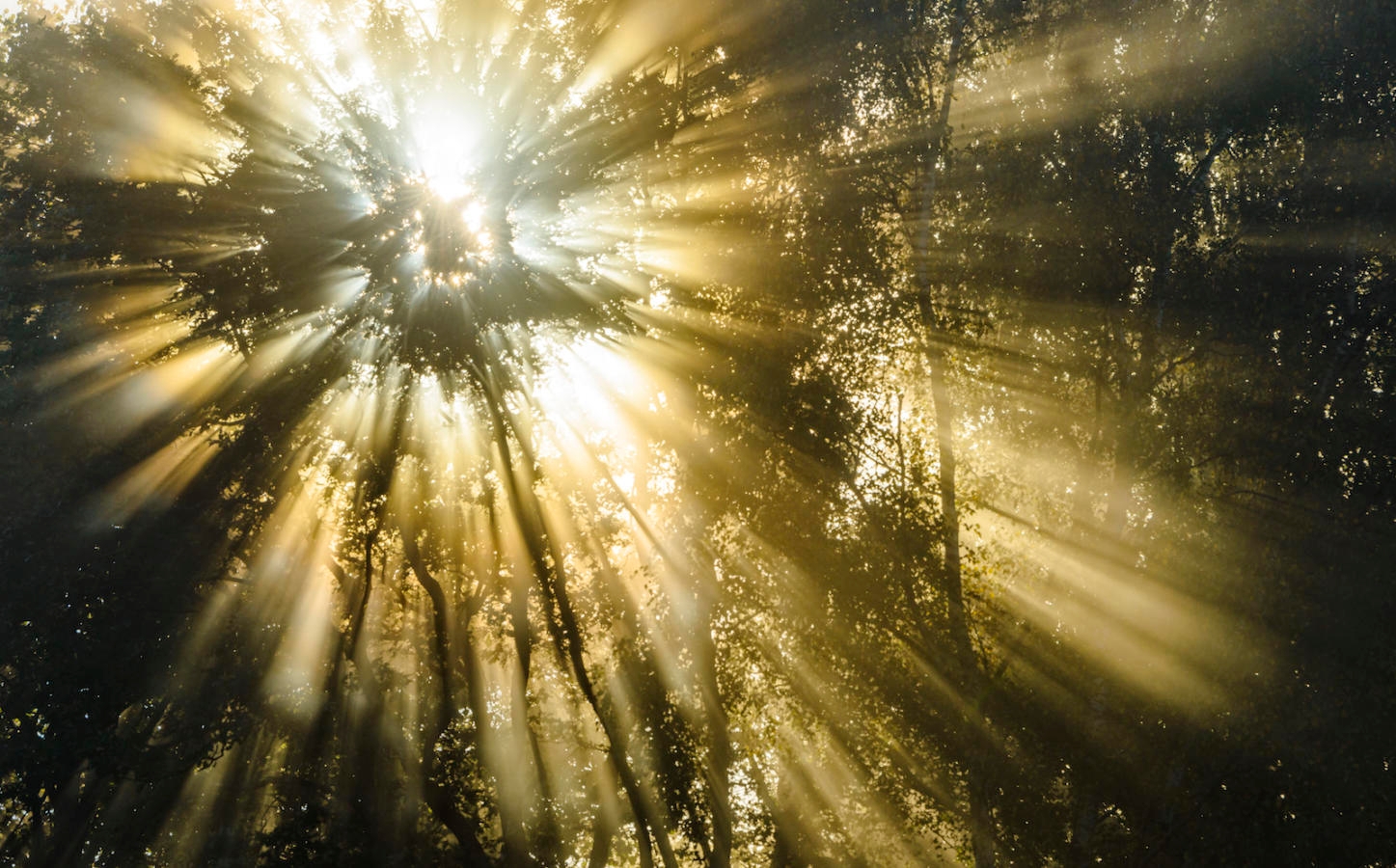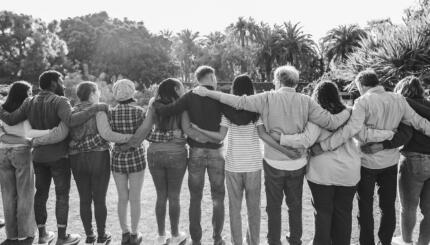When we think of the kedushah (literally “holiness”) prayer, our main association is likely with the third blessing of the Amidah, a piece of liturgy that has become so synonymous with the idea of referencing angels to sanctify God that it has become known as “The Kedushah,” suggesting that it is the only prayer that functions this way.
As it turns out, that kedushah is only one of three prayers that incorporate biblical verses — especially Isaiah 6:3: kadosh, kadosh, kadosh (“holy, holy, holy”) — that construct a dialogue between angels and humanity. There’s a much lesser known Kedushah d’Sidra at the end of the morning service, and there’s a text called Kedushah d’Yotzeir (“the sanctification of creation”) that appears immediately after Barekhu, the call to worship that formally opens the morning service.
Kedushah d’Yotzeir is the fourth of four subsections of a blessing that praises God as the one who creates light and fashions darkness. This blessing set culminates with the famous words or chadash al tziyon ta’ir (“cause a new light to illumine Zion”). While this kedushah is not the most celebrated or well known, it does offer some insights into the broader purpose of prayer and our jobs as religious people in the larger world. It does so in three key ways.
A model of connecting our individual prayer to a larger whole
In contrast to the kedushah from the Amidah, which can only be said when there is a minyan of 10 people gathered together, the Kedushah d’Yotzeir is still permitted — and even required — when a person is praying individually. In general, Jewish tradition tends to prioritize prayer in a minyan; however, the presence of a kedushah that is permitted in non-minyan prayer emphasizes the idea that each person, regardless of how inside or outside the communal core they may fall in a particular moment, is still crucial, and their prayer is still welcomed and accepted.
With your help, My Jewish Learning can provide endless opportunities for learning, connection and discovery.
This tension between the individual and the community is reflected in a line from the Kedushah d’Yotzeir that describes a scene in which the angels on high chant kulam k’echad onim v’omrim b’yirah (“all together as one chant and speak with reverence and awe”). Rabbi Reuven Hammer, in his Or Chadash commentary, describes this angelic chorus as “depicted as totally harmonious.”
This nuance of harmonious, as opposed to in clean unison, is enlightening. Harmony implies individuals working in concert to bring about a whole that is greater than the sum of its parts. It says: we don’t have to be the same to be here together, thereby offering a place for distinction and difference as core to what community means. Each voice is both a distinct individual and a component of a larger communal whole at the same time.
Understanding our relationship to the idealized world the prayer describes
In the kedushah of the Amidah, we don’t just describe the angelic vision — we embody it. We put our feet together and sway back and forth, stepping (quite literally) into the angelic experience. In the Kedushah d’Yotzeir, there is no standing, no swaying. We describe the angelic vision from just a bit outside.
This difference is crucial, and helps model something significant about the aspirations we articulate during prayer. The world we describe throughout the morning service is a glorious one: it’s a world of peace, wisdom, abundance, light, love and redemption. It’s a world we wish we could exist inside of, a world we remind ourselves of our obligation to bring about. But it’s also a world that is fundamentally separate from the reality we currently inhabit.
By giving us two models of how we relate to this angelic vision, our prayers help us to notice this gap. Sometimes, there is great value in fully inhabiting the world of angels, if only for a brief, constructed moment. Other times, it’s important to remind ourselves how far we are from that world. The Kedushah d’Yotzeir helps not only to notice, but also to bless the sanctity of that gap – a gap that we are hopefully moved all the more forcefully to help close.
The inherent dignity in each person
To the extent that this moment in the service is noticed or remembered, it is likely less because of its content and more because of its form. Other than the brief Barekhu, this is the first moment of verbal call and response in the service. The prayer leader, adopting the role of narrator, describes the angelic scene, during which the community takes the part of angels, chanting the lines kadosh, kadosh, kadosh (“holy holy, holy”) and baruch k’vod Adonai mimkomo (“Blessed is God’s glory”).
Until this moment, the prayers of the community have been led and guided by the prayer leader. Now, though, we are on our own – left to declare the words of our liturgy without the supportive net of the prayer leader’s voice keeping us together.
In a typical prayer service, the stakes of this independence are relatively low. If we miss our line, everything will be okay. But this experience of going out on one’s own without the typical structures of support and guidance is not unique to prayer. Each of us has had, in one way or another, to venture out on our own — a life moment that can often be scary or make us feel vulnerable.
It is notable, then, that this moment of liturgical independence is preceded by and introduced with the affirmation kulam ahuvim, kulam b’rurim, kulam giborim (“all are loved, all are pure, all are mighty.”) It’s as if to say: before people feel safe or comfortable going out on their own, they need to feel reassured in the knowledge that they are capable, strong, and loved.
This passage asks us to recognize the times in which we need to make ourselves vulnerable, to do something that requires courage yet is laden with fear. And we give ourselves a space and a moment to remind ourselves: we can do this. We are worthy. We might feel, in whatever moment we’re gearing up for, as though we are alone. But in truth, we are part of a community and a relationship with the divine in which we are noticed, affirmed, and loved.
In these three key ways, the Kedushah d’Yotzeir is emblematic of the various roles of prayer. Jewish prayer, at its best, allows us to feel both wholly ourselves and also part of a bigger narrative. It drives us to improve our world and to bring about our idealized vision for who we can and want to be. And it reminds us of the inherent worth, dignity and value of each human soul.
In so doing, this piece of liturgy becomes deserving of its name: a call to holiness.
minyan
Pronounced: MIN-yun, meen-YAHN, Origin: Hebrew, quorum of 10 adult Jews (traditionally Jewish men) necessary for reciting many prayers.



